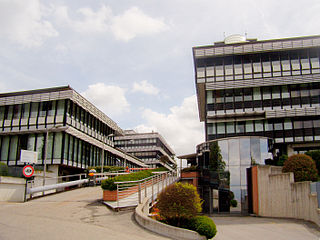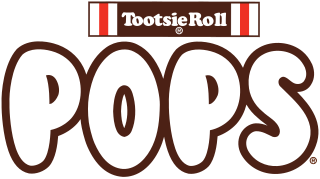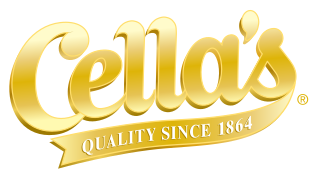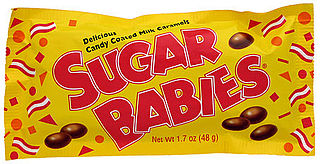
York Peppermint Pattie is an American dark chocolate enrobed peppermint confection introduced in 1940 and currently produced by the Hershey Company.

Ferrero International SpA, more commonly known as Ferrero Group or simply Ferrero, is an Italian multinational company with headquarters in Alba. Ferrero is a manufacturer of branded chocolate and confectionery products, and the second biggest chocolate producer and confectionery company in the world. Ferrero SpA is a private company owned by the Ferrero family and has been described as "one of the world's most secretive firms".

Nestlé Candy Shop was a confectionery brand owned and licensed by the Swiss corporation Nestlé. In 2018, the branding and production rights were sold to the Ferrero Group, and as a result, the brand was discontinued.

Life Savers is an American brand of ring-shaped hard and soft candy. Its range of mints and fruit-flavored candies is known for its distinctive packaging, coming in paper-wrapped aluminum foil rolls.

Junior Mints are a candy brand consisting of small rounds of mint filling inside a semi-sweet chocolate coating, with a dimple on one side. The mints are produced by Tootsie Roll Industries, and packaged in varying amounts from the so-called 'fun-size box' to the much larger 12 oz. box.

Andes Chocolate Mints are small rectangular candies. The crème de menthe variety consists of one mint-green layer sandwiched in between two cocoa based chocolate flavored layers. The candies are usually wrapped in green foil and imprinted with the company's logo, the word Andes written amidst a drawing of snow-capped peaks. First launched in 1950, they are produced by Tootsie Roll Industries and made in Delavan, Wisconsin.
Charleston Chew is a candy bar consisting of marshmallow flavored nougat covered in chocolate flavor coating. It was created in 1922 by the Fox-Cross Candy Company, founded by stage actor Donley Cross and his friend Charlie Fox. The candy was named after the Charleston, a popular dance at that time.

A Tootsie Pop is a hard candy lollipop filled with the chocolate-flavored chewy Tootsie Roll candy. They were invented in 1931 by an employee of The Sweets Company of America. Tootsie Rolls had themselves been invented in 1896 by Leo Hirschfield. The company changed its name to Tootsie Roll Industries in 1969. The candy made its debut in 1931 and since then various flavors have been introduced. The idea came to be when a man who worked at The Sweets Company of America licked his daughter's lollipop at the same time he was chewing his Tootsie Roll. He loved the idea and pitched it to everyone at the next snack ideas meeting.

Cella's is a brand of cherry cordial confection marketed by Chicago-based Tootsie Roll Industries, who purchased the brand in 1985. They were originally introduced in 1864.
The American Candy Company is a confectioner specializing in old-fashioned hard candies.

Sugar Babies are bite-sized, pan-coated, chewy milk caramel sweets which are relatively soft to chew. They are a confection originally developed in 1935 for the James O. Welch Co. by Charles Vaughan (1901-1995), a veteran food chemist and one of the pioneers of pan chocolate, who invented both Junior Mints and Sugar Babies for the James O. Welch Company. Sugar Babies were named after a song called "Let Me Be Your Sugar Baby".

Farley's & Sathers Candy Company was created as an umbrella company to roll up many small companies, brands and products under a common management team. The confectionery business segment is made up of many small companies, often with intertwined relationships and histories.

Pearson's Candy Company is an American chocolate and confectionery manufacturer headquartered in Saint Paul, Minnesota. Founded as a confectionery distribution firm in 1909, the company began to manufacture its own products in 1912. Originally a family-owned company, Pearson's experienced changes in ownership, acquisitions and product alterations in the 1960s, 1970s and 1980s, before its most recent sale in November 2018 to Spell Capital, a Minneapolis private equity firm.

Tootsie Roll is a chocolate-flavored candy that has been manufactured in the United States since 1907. The candy has qualities similar to both caramels and taffy without being exactly either confection. The manufacturer, Tootsie Roll Industries, is based in Chicago, Illinois. It was the first penny candy to be individually wrapped in America.
The Spangler Candy Company is a privately owned confectioner that has been manufacturing and marketing candy for more than a century. Headquartered in Bryan, Ohio, Spangler's products include lollipops, candy canes, and marshmallow circus peanuts. Spangler brand names include Dum-Dums, Bit-O-Honey, Necco Wafers, Sweetheart Candies, Spangler Candy Canes, Spangler Circus Peanuts and Canada Mints. Dum-Dums, the company's most recognized brand, were invented in 1924, and Spangler purchased the rights and equipment in 1953. The small multicolor lollipops are popular as free giveaways. In 2018, Spangler bought various assets and brands from the defunct Necco, retaining the rights to Necco Wafers, Sweethearts conversation hearts, and Canada Mints. In 2020, Spangler bought the rights to Bit-O-Honey from Pearson Candy Company.
The Charms Candy Company was a candy company founded in 1912 and sold to Tootsie Roll Industries in 1988. It was known for candies including Blow Pops and Charms.
Melvin J. Gordon was an American business executive and businessman. He served as the chairman and CEO of Tootsie Roll Industries for fifty-three years, from 1962 until January 2015. Gordon, who was 95 years old, was the oldest CEO of a company trading on a major American stock exchange at the time of his death in 2015. He oversaw the day-to-day production of the company's trademark brands, including Tootsie Rolls, Tootsie Pops, Junior Mints, and Charleston Chews. As of 2015, the company manufactures approximately sixty-four million Tootsie Rolls per day.
Bromangelon was a gelatin dessert popular in the late 19th century and early 20th century. It was invented around 1895 by Leo Hirschfeld, who would later invent the Tootsie Roll. Bromangelon is regarded as the first commercially successful gelatin dessert powder, having been mass-marketed several years before Jell-O, which would eventually drive Bromangelon off the market.

Rockwood & Company was a New York City-based chocolatier which operated from 1886 until 1957. It coordinated the industry's first resale price contracts, operated the largest chocolate factory in New York, and was the second largest producer of chocolate in the United States, after the Hershey Company. Founded in the borough of Manhattan, it moved to the Brooklyn neighborhood of Wallabout, gradually expanding its footprint to occupy most of a city block. In 1919, a fire led to a flood of chocolate in the street, attracting a crowd of children. Rockwood & Company sold the factory to the Sweets Company of America in 1957, who used it to produce Tootsie Rolls until it closed in 1967. The Rockwood & Company factory complex was listed on the National Register of Historic Places in 1983, which was later merged into the Wallabout Industrial Historic District. It was converted to luxury apartments in 1996.















